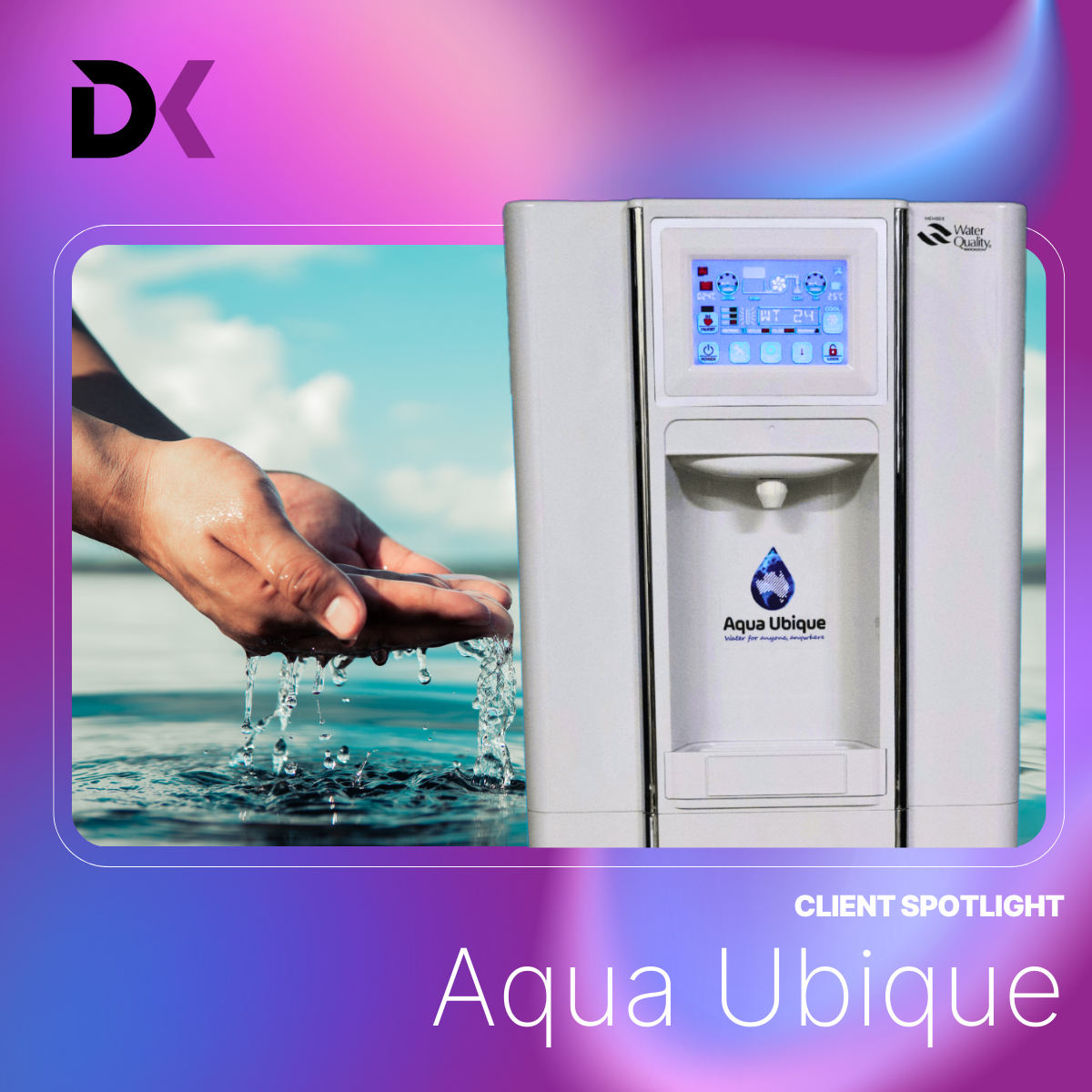Email marketing
Email marketing has turned into the forgotten channel when it comes to digital marketing. Most digital marketers now swear by Social Media, Google Ads and Display advertising. However, email marketing still yields the biggest ROI and is a great way of contacting your customers.
Is Email marketing still relevant?
There is no other platform that has warm leads that will want to read your content. With the new data privacy laws like the GDPR and the Australian privacy law, many businesses now need consent to send emails. Which means that people who sign up for your newsletters or email list want to receive your emails.
When comparing the success of social media versus email marketing there are a few important distinctions to make. Below are the benefits of Email marketing laid out:
- Most people check their email first thing in the morning (57%) rather than Facebook or other online platforms. (Facebook has 7%)
- 91% of users use their email daily
- 77% of consumers prefer email over social media for promotions that are permission based
- When consumers are looking for a deal, 44% say they check their email for a company they know versus 4% that will go to Facebook
- Email marketing reaches around 79% of people subscribed to your newsletter. Whereas organic reach on Facebook is only 1 to 6%
- Email marketing lets you segment your message depending on past interactions a user had with your brand
- Email marketing lets you easily A/B test your headlines and other parts of your campaign
- Email marketing still has the highest ROI, getting up to 122%
This doesn’t mean that social media should be ignored. Social Media is a great tool to drive traffic to your website. By then converting those visitors to email subscribers will most likely turn those visitors to customers. Then use email to generate leads, drive sales and increase customer retention.
Establishing goals for your email marketing campaign
One of the main things to do before you start writing an Email is to understand the goal that you are trying to achieve. If you start writing an email without a clear direction it is going to be obvious to the audience as well.
There are several reasons as to why emails get written. These can go from as simple as wanting to get more sales to alerting your subscribers that there is a new deal coming up soon. By setting goals you are also able to more specifically tailor headlines and make the entire experience seamless for the subscriber.
If your audience is clearly segmented, then you can create more specific goals. If you know that you are going to be sending an email to customers than it is important to make sure that your messaging and goals are different.
When making goals for email marketing it is important to keep in mind what your customers will be expecting. If your aim is to educate your customers, you might send an eBook with your email. Your goals could be as follows:
- Get a CTR of 10% on this email
- Get 20% downloads of the eBook
How to write an engaging email
Writing content that is engaging is difficult. Writing helpful headlines is even more difficult. You have a limited amount of words to make a subscriber open your email. Below are a few tips on how to get an email opened.
- Promise something worthwhile. If you let subscribers know what to expect before they open the email, what you will teach them and how you will make them better at their job, they will want to read more.
- Pique curiosity. Sometimes use uncommon words. Make people aware that they can learn from your email. Fill an “information gap”. If you use headlines such as “thirty helpful tips” change it to “30 helpful tips” using numbers in headlines stops the eye from wandering.
- Experiment with headlines. Try things that you would normally not try. You will be surprised what resonates with your audience and what doesn’t.
- Learn from the great email lists. Subscribe to successful email lists that engage. Use the subscriptions that you look forward to and learn from them. We recommend Total Annarchy.
Writing engaging emails that users will want to read is challenging. Having the ability to write engaging emails will help you get a higher open rate and click-through-rate. We will highlight a few tips on how to write engaging emails below.
- Write for one person. Many people will write as if they are talking to their entire email list. Instead, focus on writing for one person only.
- Write when you can be helpful. Don’t email your clients when you are not able to provide helpful information. Don’t email when you need something from readers. Be genuine, friendly and generous. Write like you are writing to a friend
- Be trustworthy. Let new subscribers know what to expect. Before users sign up, provide them with honest information about what you will email about. If you are going to send them a sales email once a month, only do this once a month.
- Communicate using your real name. If you are going to email your subscribers. Don’t use a generic email such as info@digikat.com.au rather, use your real name such as mick@digikat.com.au.
- Be on subscriber sides. Let users know you understand their issues and struggles. Empathise with the readers and let them know you can help. But don’t use their name too much in the email. Use natural language.
- Provide value to the readers. When people open your email, provide the value you promise. Share a tip, provide a great quote or some helpful insight.
- Write fast but keep it short. If you write fast your personality and enthusiasm will come through. But after writing the copy try to cut the email length in half. Often novelists get recommended to remove their first 2 paragraphs. Since that is lead-in to get into the right writing mindset.
- Don’t use the same greetings. There is nothing more frustrating than having the same greeting over and over. You will sound like a robot and seem impersonal. Try things like: warm regards, greetings from Newcastle, cheers etc..
- Add personality. Use words and expressions unique to you as a writer. Don’t think of it as email marketing. Think of it as a way of talking your readers and customers. Make sure you do use the word you. It is one of the most persuasive words.
- Genuinely care. Don’t be cold in your emails. Genuinely care. Be to the point, write short and strong sentences. Make sure that your audience know that you have a genuine interest in providing good value.
Now that you know how to write an engaging email, the more important part is to establish trust with your readers.
- Show what readers will miss if they don’t buy. People like avoiding risk. When you highlight the benefits of your product or service, also let them know how you can help avoid inconvenience. How you can help avoid glitches and complications.
- Let them work towards a deadline. Tell interesting stories, don’t follow a strict email formula. When you write a story that leads to your goal, the sales message. But do present the reader with a hard deadline so they stop procrastinating.
- Have a very clear Call-To-Action (CTA). Let your readers know what you expect them to do next, remind them why they should click the CTA. Also add multiple links to the same destination so there is a higher likely hood people will click to the page.
- Use the power of the PS. When writing the Post script, remind people of the deadline. Repeat what they will lose out on.
Testing your emails with split testing (A/B testing)
Split testing is trying to find out which of the two options of a website or app will perform better. This is done by changing ONE element. If you want to test more than one element this is called multivariate testing.
Make sure that you have a hypothesis that is strong and has a clear goal. Don’t start split testing for the sake of split testing. If you decide to split test without a clear hypothesis you will be making changes for the sake of it.
A good hypothesis could be:
“I want to know if having a more direct headline will improve our Open rate.”
There is many things that can be test in an email. But you should only test one element at a time. Being able to do statistically relevant is difficult while your subscriber list is small. Often it is recommended to start testing when you have around 800 to 1,000 subscribers.
We recommend split testing with roughly half of your audience base. Sending the original email to 25% of your audience and the variant to 25% will mean that half of your audience will receive the more successful variation and thus improving the Click-Through-Rate (CTR).
Recommended things that you can Split test:
- The CTA. There are many ways that you can split test a CTA. You can change the colours of the button. The wording, the text before and after the CTA. You can even move the CTA to a different location.
- The headline. Changing the text of the headline can have a lot of impact. This can be as simple as changing one word or having an entirely different text at all.
- Change the imagery. One of the things you can also change is where the image is located. You can change the imagery or remove the imagery completely.
- Change the From name. One thing you can do is change the sender details. Change the name of the person who it’s send by. You can also change the email address that the email comes from.
- Length of the email. With mobile phones being used to open emails more and more, many email providers are reducing their lengths of their emails. Attention spans on mobile phones are lower than on desktop, so a shorter copy might work for you.
Before deciding what to split test, you want to prioritise ideas that will most likely to get good results. There is a method created by a very influential marketer named Sean Ellis, the CEO of GrowthHackers, that is called the ICE method:
- Impact – How big of an impact will the test have? Will changing your content have more of an impact than changing the headline?
- Confidence – How confident are you that your changes will have a positive impact on your campaign? For example, are you more confident that personalising the subject line will have more impact than making the CTA a button or a bit of text?
- Ease – How easy is it to make this split-test? Testing the word order of your headline would take less than a minute. However, testing a different tone of voice in your email could take a longer time.
After having created the split test it is important to know what your winning factor is. It can be either: Open rate, Total unique clicks or total clicks on a selected link. Depending on these factors your winner will be decided.
After the test is done, your results might not be significant. Your changes might have very small results, some might even decrease conversions. But with every test that you perform you will understand your audience better and in the long run this will have a great benefit to your business.
As Peter Drucker said:
“If you can’t measure it, you can’t improve it.”
Growing your Email list
As mentioned above, growing your Email list is incredibly important. This is where Social Media comes in. The reach that you can get with social media is unmatched. By having a good social media presence you can reach many people. Through paid advertisement you can reach even more. Social Media is a great tool to get more visitors to sign up to your Email list. This could be to your Newsletter or to any other email list that you have.
To get more attention to your brand, and email list, there are many ways to increase your email list. Some of these can be on Social media, others can be on your website.
On social media you can:
- Host a webinar. Hosting live events has proven to be an incredibly successful method of getting more email subscribers.
- Host a giveaway. By hosting a giveaway you will be able to get people to sign up with their email addresses. Just be clear that you will also send them relevant news and information
- Use Paid Ads. Using Facebook Ads, Twitter Ads and any other platform’s paid advertisements and having a landing page that provides an opt-in form is a great way to get more subscribers.
- Answer questions. By answering questions of users on social media websites, and websites such as Quora and forums, you will be able to get more people to your website.
- Add a sign-up button to Facebook. You can add a sign-up box to your Facebook page and use this to get more sign-ups.
On websites you can:
- Provide free content by signing up. If a user is reading a blog post on a topic that you are an expert in, provide “additional content” for free by signing up to your newsletters.
- Provide segmented sign-up forms. If you offer multiple services, people are naturally interested in other topics. By letting the users subscribe in this way you are already segmenting your audience.
- Provide free access to old Newsletters. If you have a good amount of previous Newsletters you can provide these on your website for visitors to view. This way you can show the value of your Newsletters. People also see what they are missing out on if they don’t sign up.
- Make some content gated. By making some content gated you are showing users that there is “Premium” content that can only be accessed by subscribing.
- Provide guest blogging opportunities. Reach out to other bloggers and ask if they are interested in guest blogging on your site, and you guest blogging on their site. By guest blogging you can reach an entirely new audience.
Segmenting your email list
By segmenting your email list you are able to send more specific emails to your subscribers. This will reduce the amount of people that will unsubscribe for getting irrelevant content.
For example, if you are a digital marketing agency like us, you might offer content related to Social Media, Google Ads, Inbound Marketing, Videography and more. However, not everyone will be interested in reading about Social Media.
By letting visitors decide which content they find relevant, you can provide more tailored emails and have less “spam” entering their inbox.
The importance of segmenting your database cannot be stressed enough. Make sure that you can send the right emails to the right people. This will lower unsubscribe rates and provide you with a more engaged audience.
From the blog


